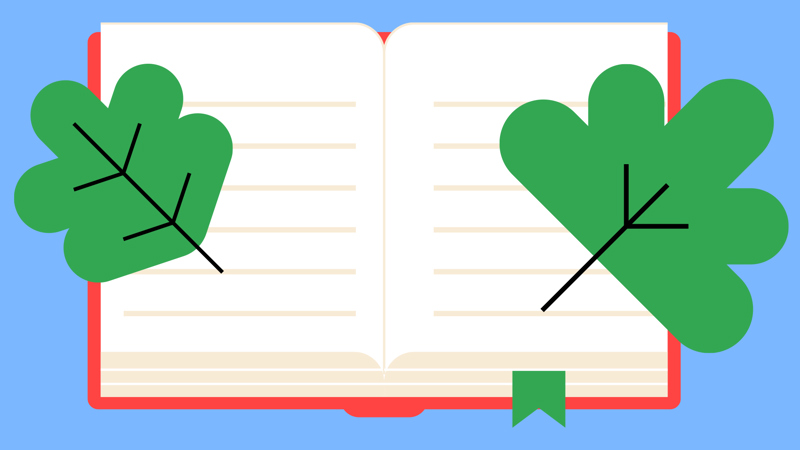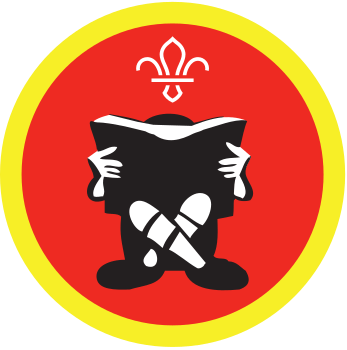
Take a leaf from someone else’s book
You’ll need
- Coloured pens or pencils
- Scissors
- String
- Sticky tape
- Natural materials (for example, leaves, twigs, feathers)
- Hole punch
- Pebbles or sand
- A clean jam jar (one for each person)
- Leaf templates (or plain paper to draw these onto)
Before you begin
- For this craft, everyone will need one clean jam jar.
Gather your thoughts
- Select three books you have read or used recently. One should be fiction, and another non-fiction. If you have filled in a reading log, you might want to refer to this while creating your twig trees.
- Cut out the leaf templates, or draw and cut your own.
- On different leaves, write a sentence or two about something you thought or felt about each of your three chosen books.
- When you have at least one leaf for each book, write the title and author of the book on the reverse of each leaf.
Assemble your tree
- Individually make your very own mini tree. This can be done by pouring some pebbles, rocks or sand into a clean jam jar, then pushing in twigs or sticks.
- Swap your leaves with different people in your section, making sure to explain what you've written, and why, on each leaf. You could explain why the characters or events you've written about are important to you, or see if the books other people read contained similar people or places.
- When you've exchanged all of your leaves, attach the leaves you've been given to your jam jar tree. Push the bottom of the leaf through a twig and secure into place with a piece of tape, or use a hole punch and twine.
- Take some time to read through the different thoughts and feelings other people had about books they read. You now have your very own reading list to take home and see if you thought the same thing about those books.
Reflection
Books allow you to experience people, events, and entire worlds that are different from your own. Through this activity, and reading in general, we learn to value and trust people from different backgrounds and develop empathy. What did the books you read make you feel? Did you discover new places or ways of life? If there was a character in one of the stories that faced a challenging situation, imagine what you would have done in their shoes. Would you have made similar choices?
Safety
All activities must be safely managed. You must complete a thorough risk assessment and take appropriate steps to reduce risk. Use the safety checklist to help you plan and risk assess your activity. Always get approval for the activity, and have suitable supervision and an InTouch process.
- Scissors
Supervise young people appropriately when they’re using scissors. Store all sharp objects securely, out of the reach of young people.
You don't have to write your thoughts or feelings – you could draw or illustrate them instead. You could even choose colours to represent the emotions that characters felt, and shade in your leaves accordingly.
All Scout activities should be inclusive and accessible.
Create a whole section version, by drawing the trunk and branches of a tree onto a large piece of paper and sticking all the leaves onto it. Can you group leaves that are about the same book, or books by the same author? See if you can find connections between characters or events that happen in different books.
